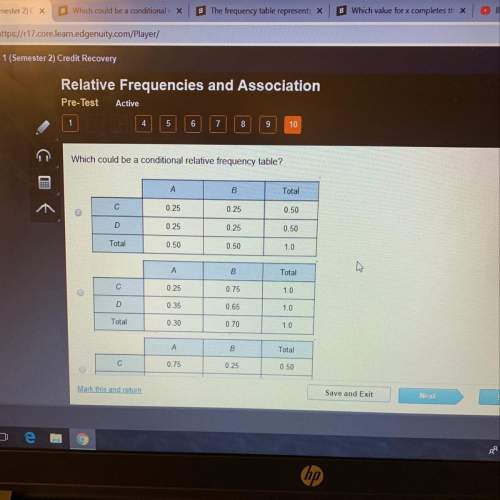
Mathematics, 18.07.2020 23:01, nuhaminbruk
BioMed Engineering is considering two mutually exclusive investments. The projects' expected net cash flows are as follows:
Expected Net Cash Flows
Time Project A Project B
0 ($405) ($705)
1 ($285) $200
2 ($205) $205
3 ($105) $210
4 $605 $215
5 $650 $220
6 $925 $225
7 ($200) $230
In your report, identify which project would be selected (assuming they are mutually exclusive) for each investment criterion. Note that cash outflows (costs) are given in parenthesis. Employ the Excel file to answer the following questions.
Part 1: Net Present Value
C. Construct NPV profiles (a data table of project NPVs for different costs of capital) using the Excel NPV function for Projects A and B.
D. Graph both NPV profiles in a single plot with NPV on the y-axis and cost of capital on the x-axis (label the x-axis, y-axis, chart title, and axis). Use a scatter with straight lines chart type. (7 points)
C) NPV Profiles
Cost of Capital Project A Project B
0%
1%
2%
3%
4%
5%
6%
7%
8%
9%
10%
11%
12%
13%
14%
15%
D) NPV Profiles Graph

Answers: 3
Other questions on the subject: Mathematics

Mathematics, 21.06.2019 14:00, babycakesmani
What is the product of the radical expression. (7-2square root) (8+2 square root)
Answers: 2

Mathematics, 21.06.2019 17:00, SillyEve
In tossing one coin 10 times, what are your chances for tossing a head? a tail? 2. in tossing one coin 100 times, what are your chances for tossing a head? a tail? 3. in tossing one coin 200 times, what are your chances for tossing a head? a tail? deviation = ((absolute value of the difference between expected heads and observed heads) + (absolute value of the difference between expected tails and observed tails)) divided by total number of tosses. this value should always be positive. 4. what is the deviation for 10 tosses? 5. what is the deviation for the 100 tosses? 6. what is the deviation for 200 tosses? 7. how does increasing the total number of coin tosses from 10 to 100 affect the deviation? 8. how does increasing the total number of tosses from 100 to 200 affect the deviation? 9. what two important probability principles were established in this exercise? 10. the percent of occurrence is the obtained results divided by the total tosses and multiplied by 100%. toss the coins 100 times and record your results. calculate the percent occurrence for each combination. percent head-head occurrence: percent tail-tail occurrence: percent head-tail occurrence:
Answers: 3

Mathematics, 21.06.2019 17:40, zitterkoph
Which basic geometric term has no width, no length, and no thickness? line b. point c. angle d. plane
Answers: 2

Mathematics, 21.06.2019 19:30, Cupcake8189
Which inequality has a dashed boundary line when graphed ?
Answers: 2
Do you know the correct answer?
BioMed Engineering is considering two mutually exclusive investments. The projects' expected net cas...
Questions in other subjects:

History, 18.02.2021 18:30

Mathematics, 18.02.2021 18:30

Mathematics, 18.02.2021 18:30

Mathematics, 18.02.2021 18:30


Mathematics, 18.02.2021 18:30

Health, 18.02.2021 18:30


Biology, 18.02.2021 18:30

History, 18.02.2021 18:30







